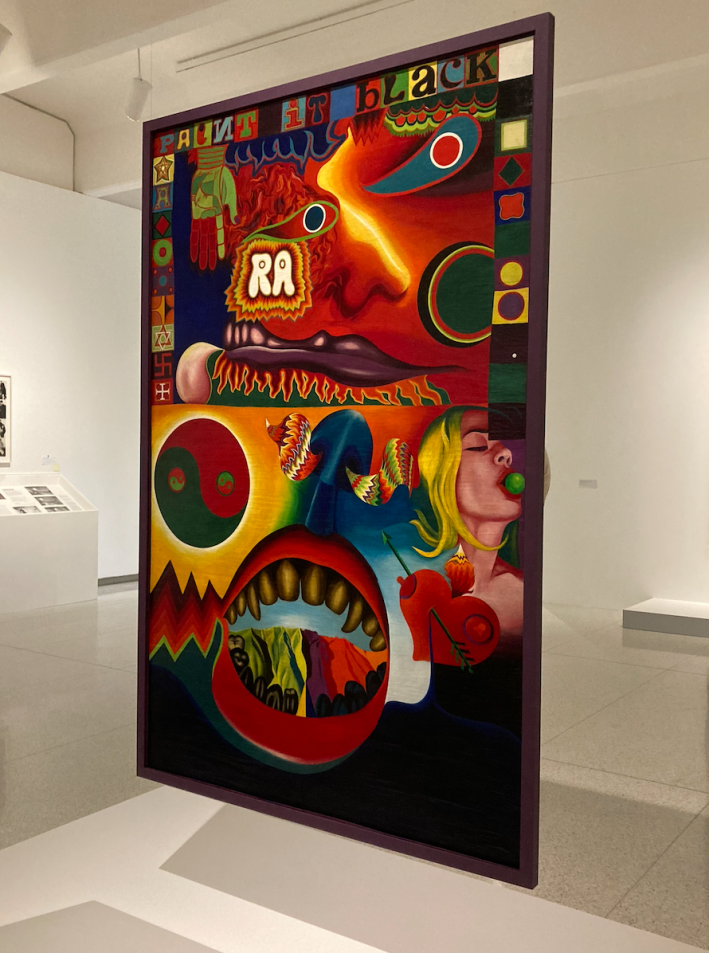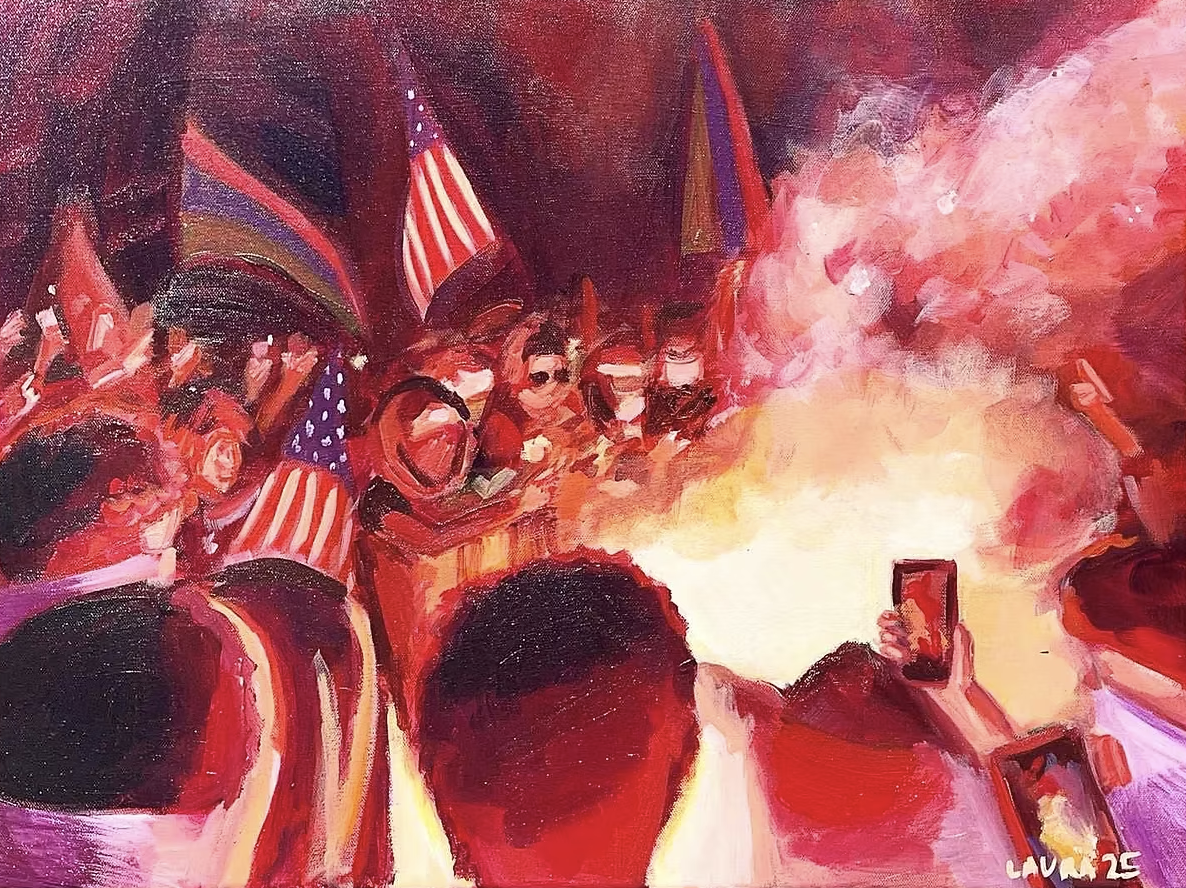No matter how oppressive a regime is, how closely people are monitored, or how carefully society is curated, people will find a way to be weirdos, to challenge authority, and to have a good time. A timely reminder of that is “Multiple Realities: Experimental Art in the Eastern Bloc, 1960s-1980s,” which opens at the Walker Art Center this weekend, featuring more than 250 works by nearly 100 artists.
People will also find ways to document history through their own lens, even when it’s considered taboo or dangerous. And, amazingly, sometimes the results are hilarious. Take Croatian artist Sonja Iveković’s subversive 1979 apartment balcony selfies, for example. Just as a parade for politician Josip Broz Tito went by, she snapped images of herself smoking, reading a book, drinking whiskey, and pretending to masturbate. (It took security about 15 minutes to notice her and tell her to go inside.)

Less raunchy but no less humorous is a late ‘70s video of the Polish group Academy of Movement, who filmed performers pretending to trip in a highly trafficked area of Warsaw. The result is a spectacle that amused and confused passersby.
“Using the body as a material is something that's very common in the region at the time,” explains curator Pavel Pyś. “The body was right there, it was available, and it was the material that artists could use, whereas getting access to materials was out of control.”
Sometimes subversion even came in the form of state-funded art projects. German artist Jürgen Wittdorf’s Youth and Sports series was officially commissioned as a celebration of young folks and athleticism. What officials didn’t seem to catch, however, is that these images are very, very gay. For about 30 years, the pieces were mass produced, on display in major sports academies and arenas, even printed in a youth Communist journal.

“I just love the idea that this artist was, you know, smuggling something unofficial into something that had very, very, very broad viewership” says Pyś. “And I love the fact that the prime authorities didn't even pick up on the taboo content of these pieces.”
The collection also includes ephemera, photography, and personal bits and pieces of people trying to live their best lives. There are images of Czech hippies enjoying nature and nudity, German men in the ‘80s rocking blue eyeshadow and comfy-looking dresses, women making out between cigarettes at a bar, and miscellaneous detritus left over from a party.

There’s also a delightfully melting painting made by Polish artist Andrzej Urbanowicz while on LSD, and a few Hungarian ads for detergent, swimsuits, and safe driving practices nearby look just as strung out.
The act of hanging out, of people gathering and interacting, especially in public, is political, regardless of time and place. “Multiple Realities” is full of examples. Following 1968’s Prague Spring, the period of protest and reforms in Czechoslovakia that was violently suppressed by the USSR, artist Július Koller was invited by a gallery in Bratislava to create an exhibition. Instead, he created a ping-pong club where people could gather and play.
“And that was very political at the time,” according to Pyś. “Gatherings were monitored at the time. So to invite people to hang out was pretty risky… It's just ping pong, but it's actually a lot more than just ping pong at the time.”
(In honor of Koller’s exhibition, the Walker will invite folks to come play ping pong in the galleries in December, with special guest players on different nights.)

But it’s not all fun and games here. Hungarian artist Gyula Konkoly’s Bleeding Monument recreates a 1968 work where a giant block of ice is wrapped in medical gauze and a red disinfectant. It will melt and ooze away during the duration of the show.
When artist Cornelia Schleime fled East Germany for West, she arrived with only her clothes, a few personal items, and one notebook of her art. Though she arranged for her pieces to eventually be shipped to her, she later learned that items left behind had been destroyed by the Stasi. It’s humbling to gaze upon the sole remaining book, which has made its way to Minneapolis for the show through less traditional methods.
“It's an artwork that has never been shipped by a fine art company, because she doesn't permit it,” says Pyś. “It’s always hand couriered. She only trusts someone to carry it with them because it's really the only thing that survives from that time.”
As with most exhibitions covering large spans of time, understanding history and place is critical. Designated context rooms help you along the way, and reading the notes beside each piece is half the fun. There's a story of a photographer who later discovered that a man she shot in drag was actually an East German agent, an artist who bribed customs agents to get plexiglass into Poland so he could make sexually charged sculptures for his apartment rooftop, the discovery of pieces decades later under a home’s floorboards. There are tales of triumph, tales of tragedy, and, perhaps most notably in this exhibition, tales of yesterday’s parties.

“Multiple Realities" isn't a show about oppression. It's a show about how humans find ways to hang out, to make friends, to document our short time on earth, and to be weird, even when our world is telling us not to.
“Multiple Realities: Experimental Art in the Eastern Bloc, 1960s-1980s”
Where: Walker Art Center, 725 Vineland Place, Minneapolis
When: Nov. 11-Mar. 10, 2024
Tickets: Free with admission ($18 general; special admissions range from free to $16)







